I visited Aspen, the most expensive vacation destination in America, for the first time. Here are 13 things that surprised me.

At the start of the 2021 ski season, I visited one of the US' most expensive ski towns: Aspen, Colorado.
Aspen is a luxury playground for the rich and famous where property sells for $8,000 a square foot.
After spending a few days here, I thought it lived up to its wealthy reputation.
Nestled in Colorado's Rocky Mountains, Aspen is a small ski town known for vacationers with big budgets.
In April 2024, Travel and Leisure published the findings from an OptimosTravel study, which analyzed the cost of vacationing in more than 100 US vacation spots. At the top of the list was Aspen, with vacationers spending an average of $761.39 per person per day in the town.
And it's not the first time Aspen has made its mark as an expensive place to live and vacation. In 2022, Aspen was the world's most expensive ski town based on the listing price for prime ski property, according to Engel & Völkers, a global real-estate company. In 2023, the ski outlet SnowBrains named Aspen the most expensive ski town in the US.
Each winter, celebrities flock to the town to show off designer ski gear on the town's snowy slopes. I joined them in December 2021 and gained a taste of the town's lavish lifestyle.
At the start of the 2021 ski season, I headed to Aspen, where I discovered coffee shops selling prosecco and dog food on room-service menus. It added to the luxury and charm of Aspen, but I also found some surprisingly affordable things, too.
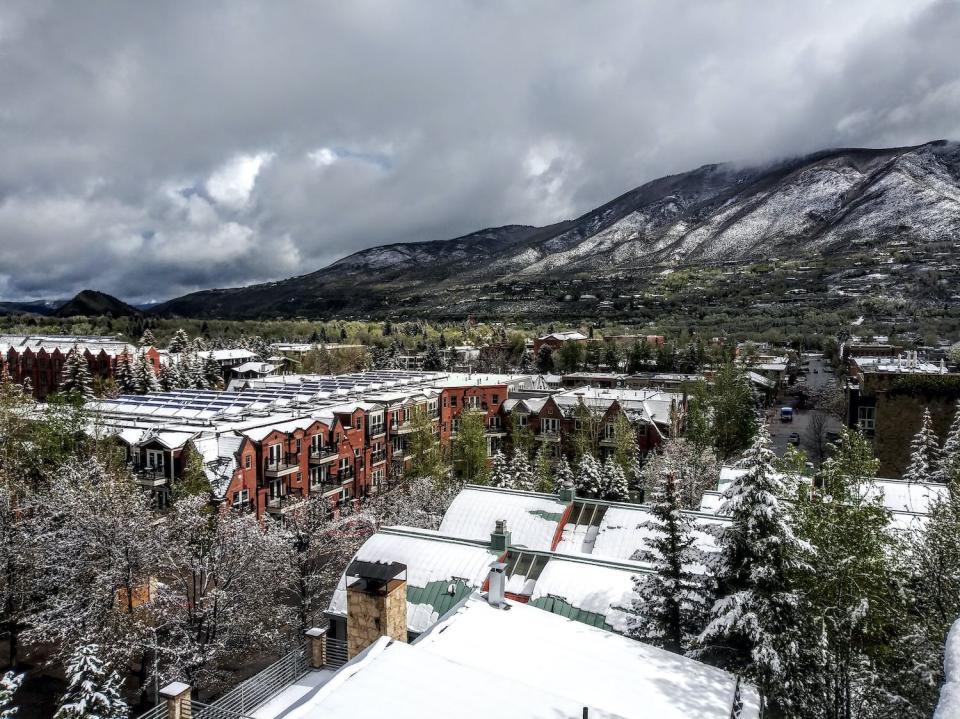
By the end of my trip, I learned that luxury is all in the details. It's when your hotel room has real plants instead of fake ones and when restaurants opt for cloth napkins over paper.
Those tiny elements cast a surprising spotlight on how Aspen had become such an expensive place to live and vacation. Here are the things that shocked me the most.
I grew up in Florida, so it may just be my roots showing, but I didn't expect people to be walking around the town in designer ski boots with skis perched on their shoulders.
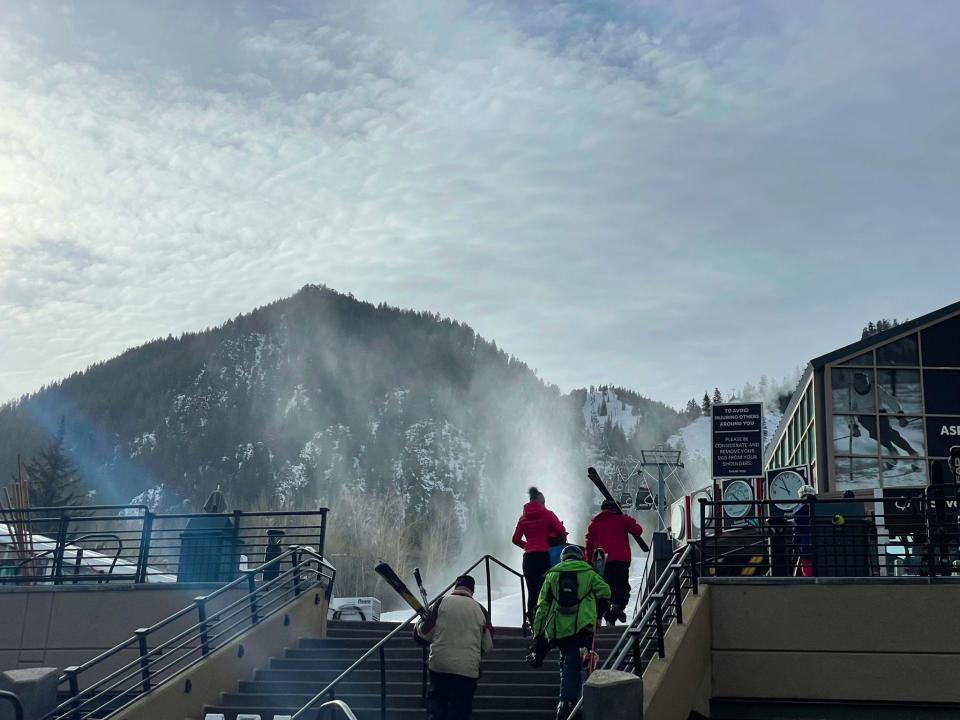
As I booked my trip, I noticed that many hotels advertised themselves as ski-in, ski-out. I'd never skied before the trip, so I hadn't realized how literal that term was until I visited Aspen.
From my hotel room, I could walk just a few hundred feet and be at the base of Aspen Mountain, where I'd have access to 87 ski trails.
But even if people weren't staying in a ski-in, ski-out accommodation, they still seemed to be trekking across the town in their ski gear. Everywhere I looked in Aspen, people were heading to the lifts in their ski boots or were just off the slopes and biking home with their snowboards in tow.
Most of my waiters and waitresses could casually list off celebrities they said they'd met.

Celebrities flock to Aspen each winter, but I was surprised at how willing and eager restaurant servers were to share their celebrity sightings.
At the White House Tavern, one waitress told me she sent the musician Leon Bridges to the bar and mentioned Dua Lipa had recently stopped by for a meal.
At Ajax Tavern, our waiter said he'd seen A-listers, including Neil Patrick Harris, Arnold Schwarzenegger, and Katy Perry.
"In the winter, you're going to see celebrities every day," my waitress at the sushi restaurant Matsuhisa casually mentioned.
I knew to expect mansions, but touring Aspen's real estate gave me an entirely new look into how billionaires live.
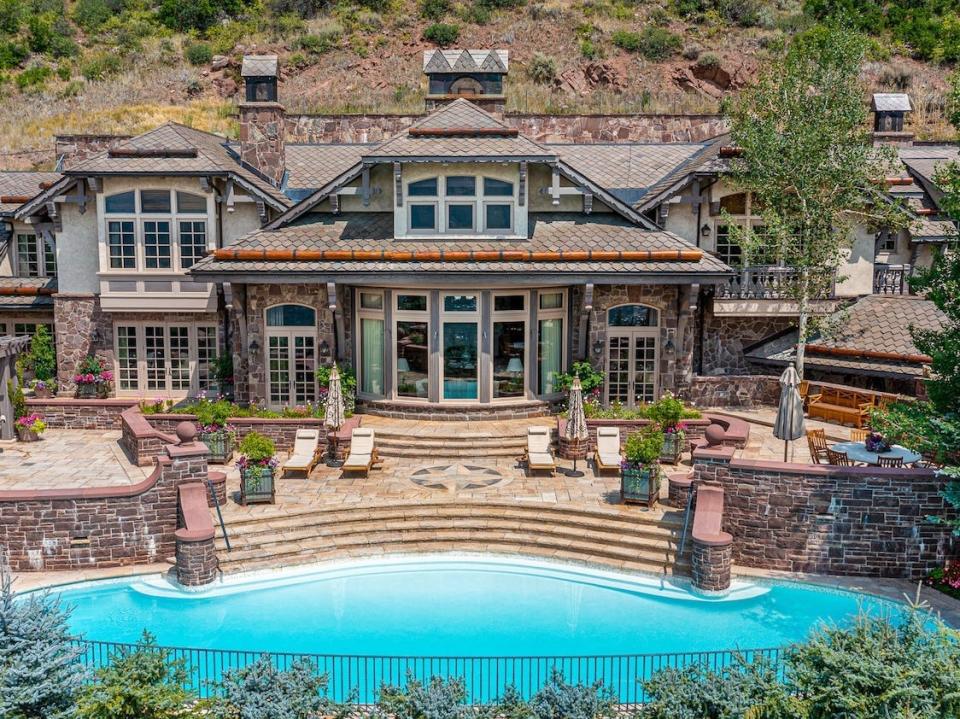
During my trip, I met up with three real-estate agents who took me inside mansions listed between $27 million and $51 million.
I quickly learned that seeing an online listing for $44.5 million is entirely different than stepping inside a house priced that high.
In Aspen Park, I toured a sprawling 15,000-square-foot home listed by agent Carrie Wells. Inside the primary bedroom was an oxygen system that pumps air into the room to mimic different sea levels and reduce the effects of altitude sickness — a luxury that I didn't even know existed.
At The Peak House, Compass real-estate agent Heidi Houston walked me through a mansion listed for $45 million. One unique feature of the home was a secret bedroom and passageway that was built for the original owner's mistress.
These were amenities I couldn't dream of having in my own home.
I was shocked to find a coffee shop's fridge stocked with prosecco.
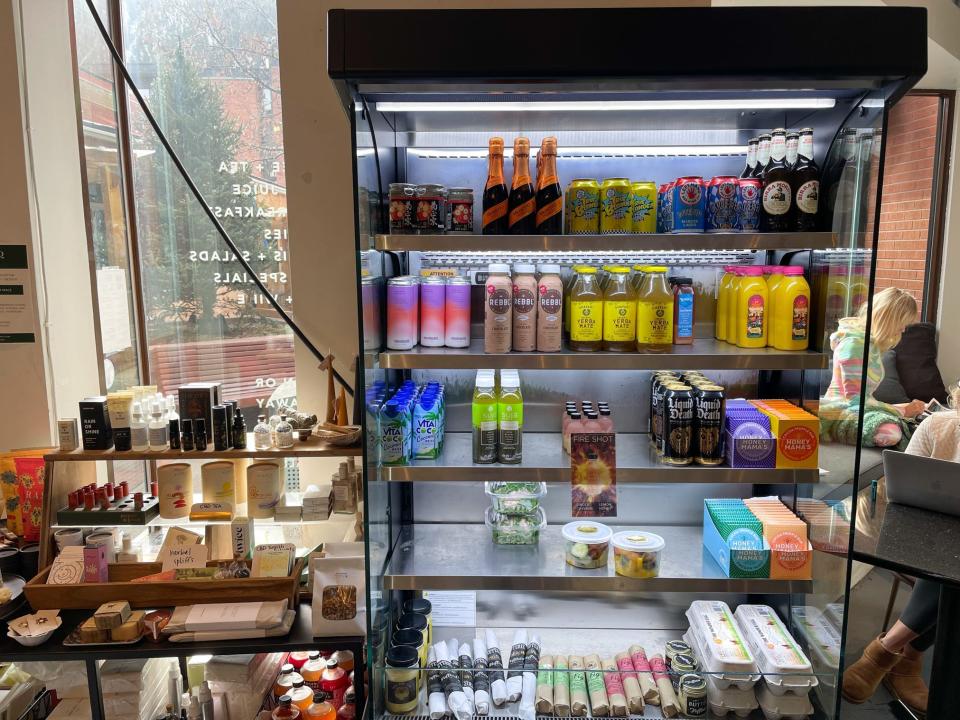
I was surprised to see miniature bottles of the bubbly next to cold-brew cans and coconut water in a coffee shop.
The shop also stocked orange juice, so, in theory, customers could make their own mimosas before the café closed at 2 p.m.
Other stores with luxe offerings also surprised me. For example, I popped into a store that sold cannabis next to $92,000 jewelry.
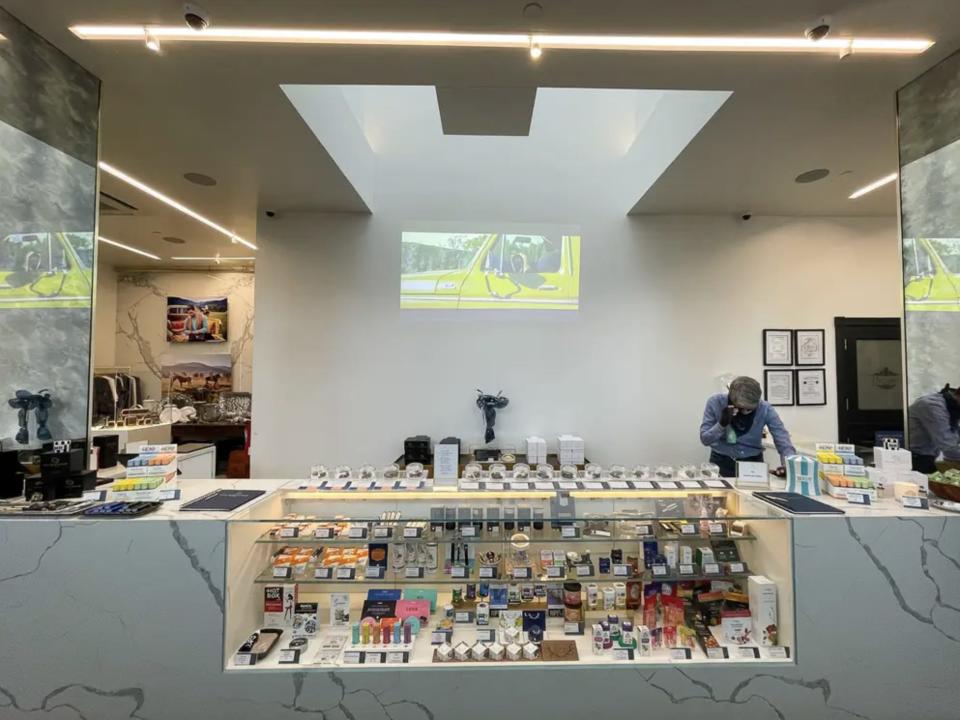
I knew designer stores would fill Aspen's streets. I expected to stumble into Gucci, Prada, and Louis Vuitton, but I didn't expect to find such ritzy dispensaries.
Then, I went to Dalwhinnie Farms. The dispensary calls itself a "boutique," and alongside rows of cannabis flower and pre-rolled joints are crystal glassware, cashmere, leather, and jewelry.
The dispensary was far from what I'm familiar with in my current home in Denver. There weren't any barred windows, weed-themed puns, or neon lights. Instead, it was elegant and seamlessly fit in with the designer brands that sandwiched the storefront.
Overall, it seemed as if Aspen took special care with its outdoor amenities. Water fountains and bicycle stations were covered for the winter season, which I'd never seen before.
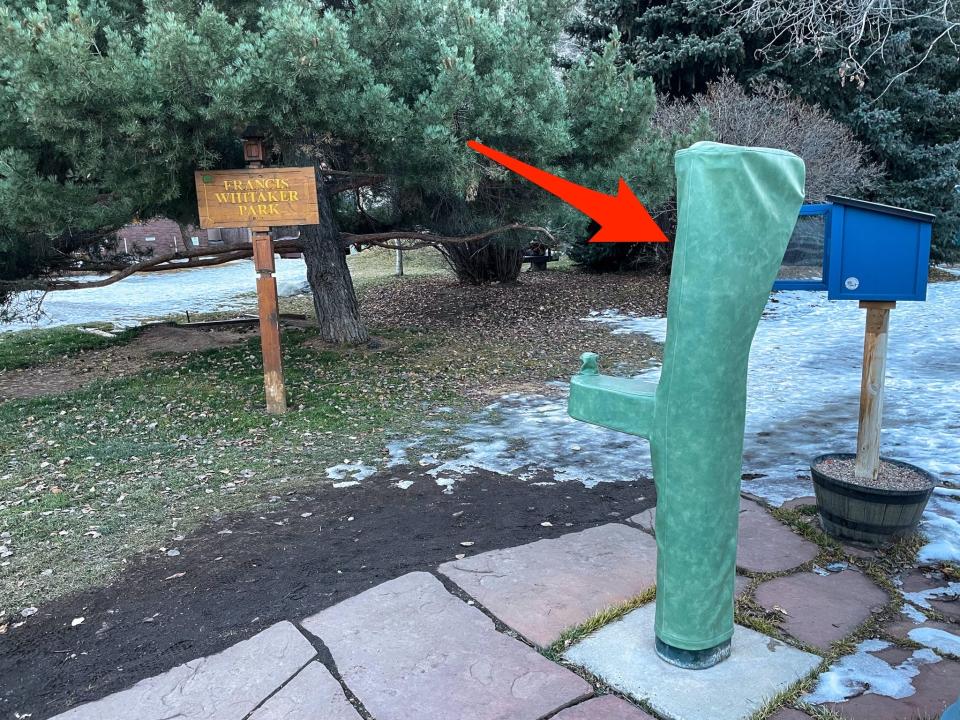
I'd never seen a town protect its water fountains and bicycle stations the way Aspen does in the winter.
I'm more familiar with winter in New York City, where you can rent Citi Bikes year-round and Central Park's water fountains end up covered in snow.
In Aspen, the bicycle rideshares close, the bikes are stored away, and plastic covers are placed on the docking stations.
The same goes for the water fountains. Each water station I saw in Aspen had a snug cover protecting it from the colder temps.
Even the tiny, free libraries dotting the town felt like an upgrade, with hard-to-find New York Times bestsellers there for the taking.
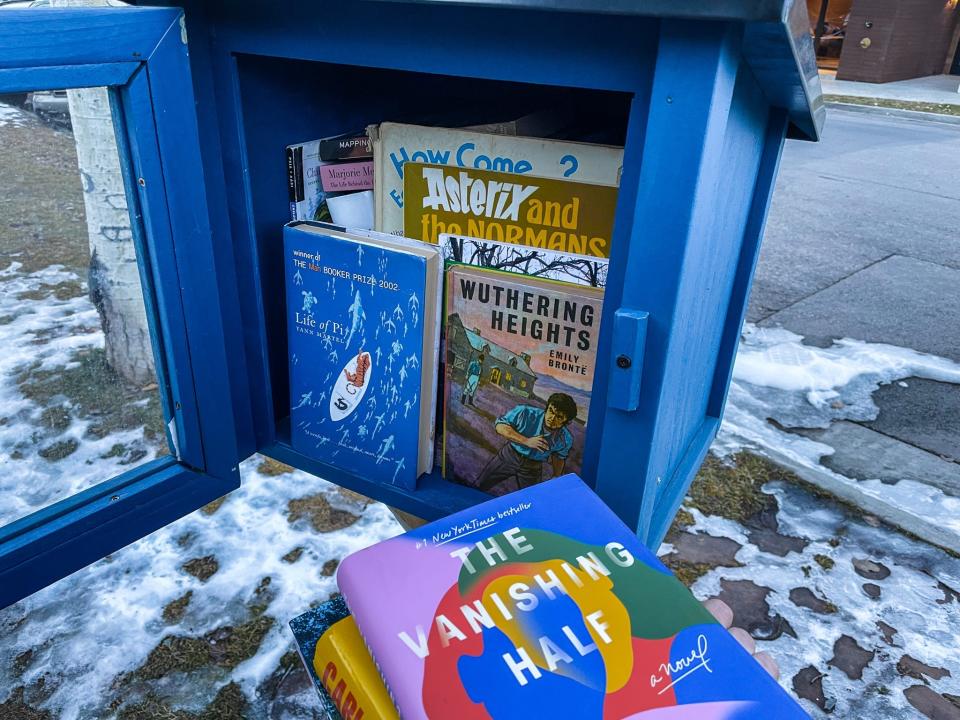
I'm used to seeing Free Little Libraries, which are like mailboxes filled with free books, across my neighborhood in Denver. But I'm not used to them being filled with books that have sat on my Goodreads wish list for months.
After peeking inside the free library, I saw a copy of "The Vanishing Half," a book that's topped The New York Times bestseller list.
Any book that popular would be gone in a free library in Denver in minutes, I thought.
Art galleries filled nearly every street in the town.
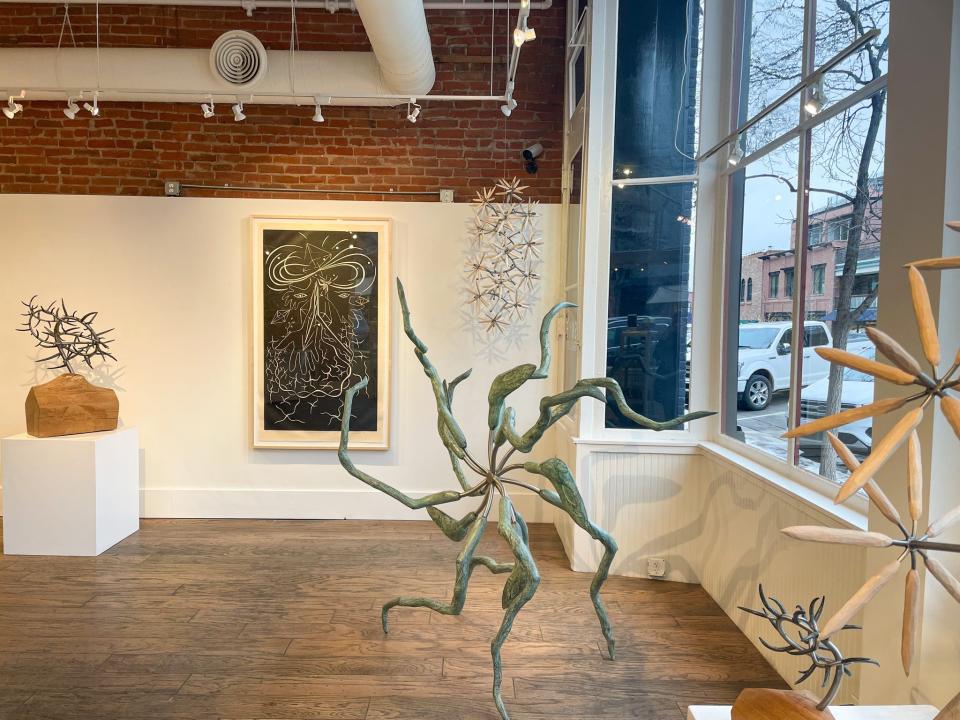
A few Aspen locals gushed to me about how their town was known for so much more than skiing.
They bragged about the Aspen Art Museum's exhibit on Andy Warhol and listed off the small galleries filling practically every town block.
While Aspen is known for its nature, I was surprised to discover an equally strong emphasis on the arts.
I didn't expect there to be so much focus on food in Aspen, but my list of restaurant recommendations was long enough to last a season.
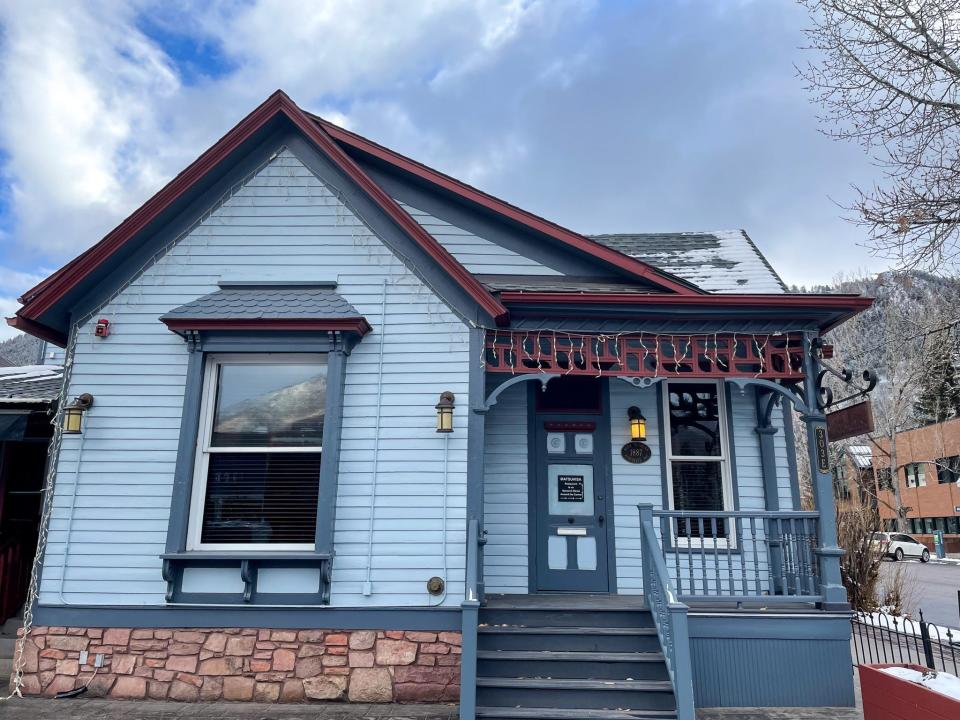
No matter who I spoke with as I explored Aspen, everyone seemed to know every restaurant in town, whether it was a luxury real-estate agent or a bellhop.
And almost every local I spoke with had a favorite.
I was urged to go to Clark's for seafood and told Steak House No. 316 served the best steak. A trip to Aspen wouldn't be complete without tasting sushi from Matsuhisa or having the wagyu burger at Ajax Tavern, I was told.
Food was clearly a significant part of the Aspen experience, I quickly learned.
While I wasn't surprised to see dogs in designer outfits walking the brick streets of Aspen, I was shocked to find dog food on a hotel menu.
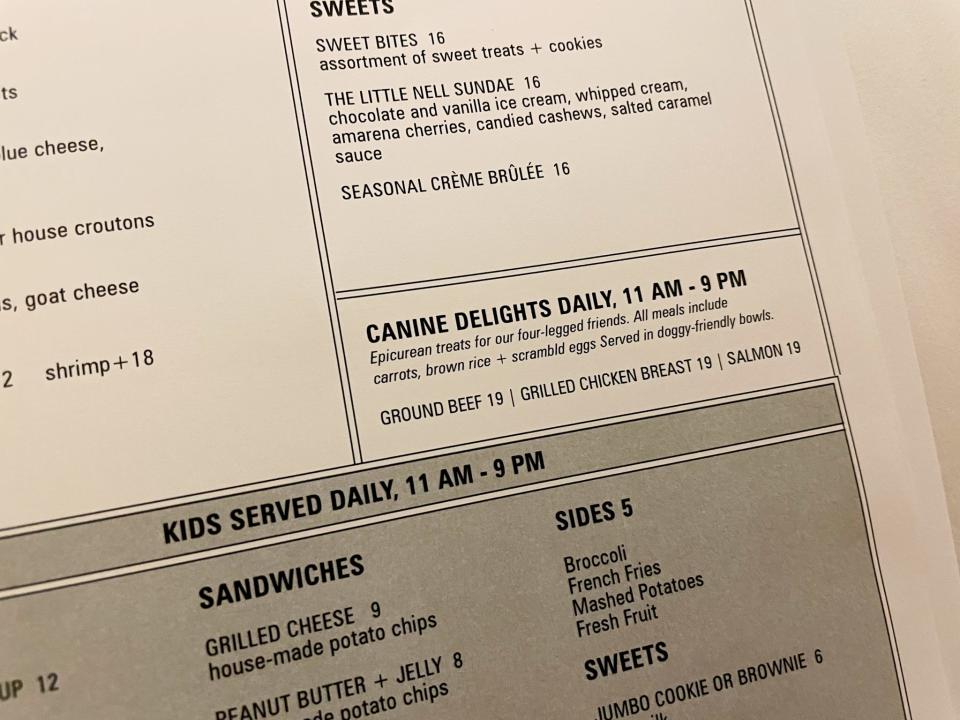
As my stomach growled on my first night in Aspen, I eyed the room-service menu at my hotel, the five-star Little Nell.
A $21 French toast and a $25 Cobb salad were available and priced as expected, but there was also food available for four-legged friends. The menu advertised "Canine Delights Daily, 11 a.m. to 9 p.m."
The meals, which were served in dog-friendly bowls, included carrots, brown rice, scrambled eggs, and the owner's choice of protein and cost $19.
Though I expected pricey meals, I also discovered some affordable eats.
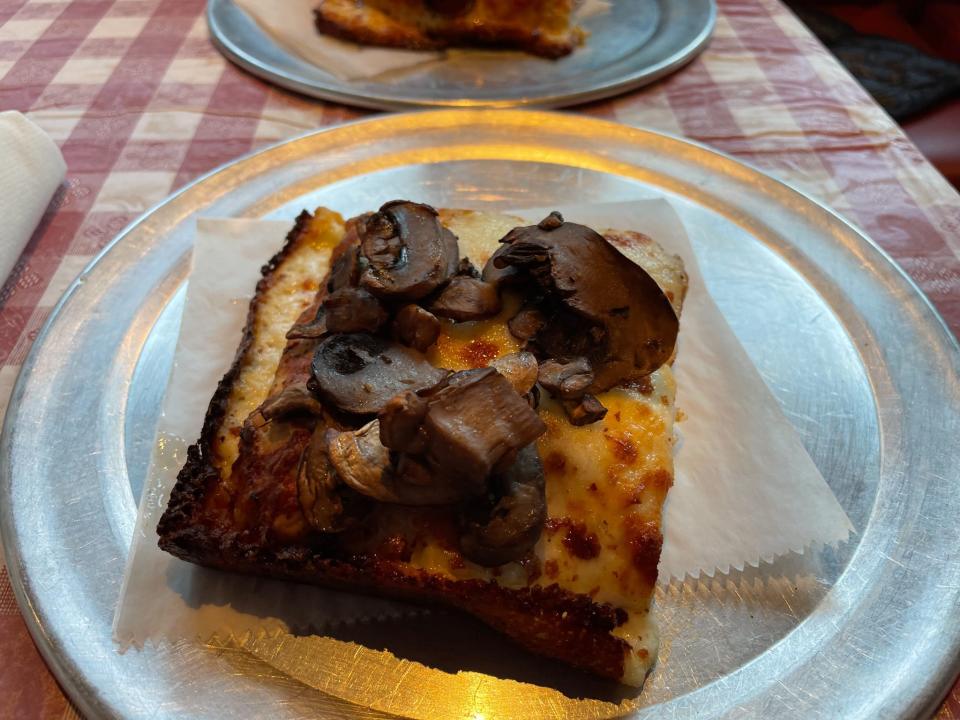
Within minutes after I arrived in Aspen, a sign advertising $8 burgers lured me into Aspen Pie Shop, a restaurant selling pizza, burgers, and sandwiches.
I enjoyed a $6 slice of pizza knowing that Aspen isn't just home to $25 entreés and $20 cocktails was a relief.
While the Aspen Pie Shop has since closed, later during my trip and on future trips, I've continued to find affordable eats such as a $9 sub or an $8 shot-and-beer drink deal.
Groceries also seemed to be reasonably priced.
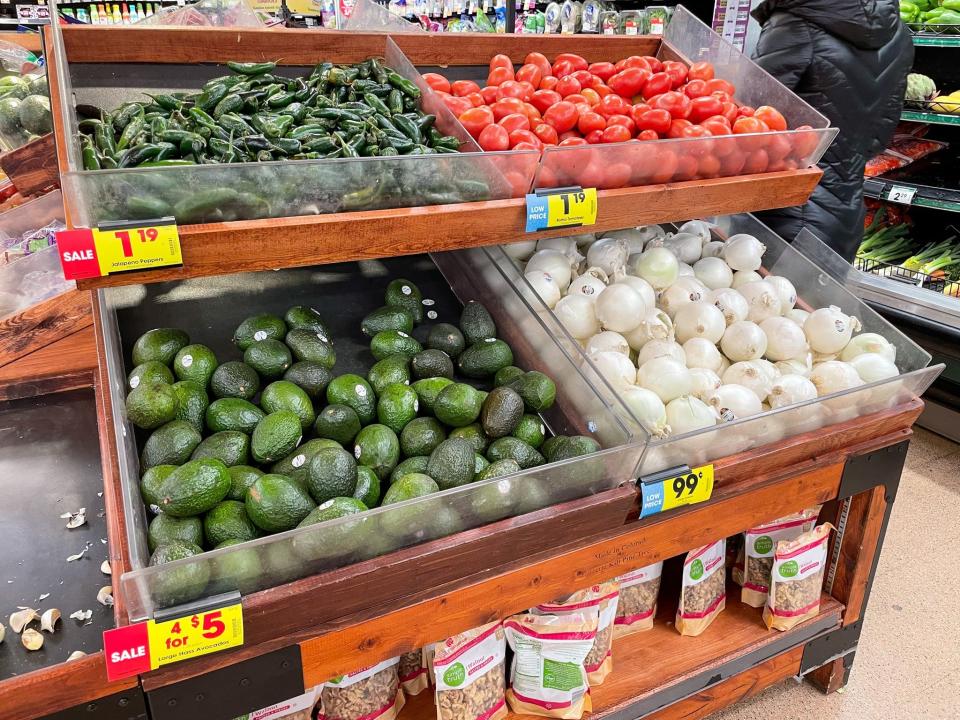
My friend tagged along for the trip, and on our first night, we walked over to City Market, a part of the Kroger grocery chain, to grab a few snacks and breakfast items for the week.
We expected Aspen's groceries to be pricier than we were used to in Denver, but the prices were surprisingly comparable to what I buy back home at King Soopers, another Kroger chain.
For example, I often spend more than $1.25 per avocado and a $1 onion didn't catch me off guard. Other snacks, like chips and pretzels, felt similarly priced as well.
After a day in Aspen, I realized why the town felt so quaint. No building was higher than six stories, making way for stunning views.
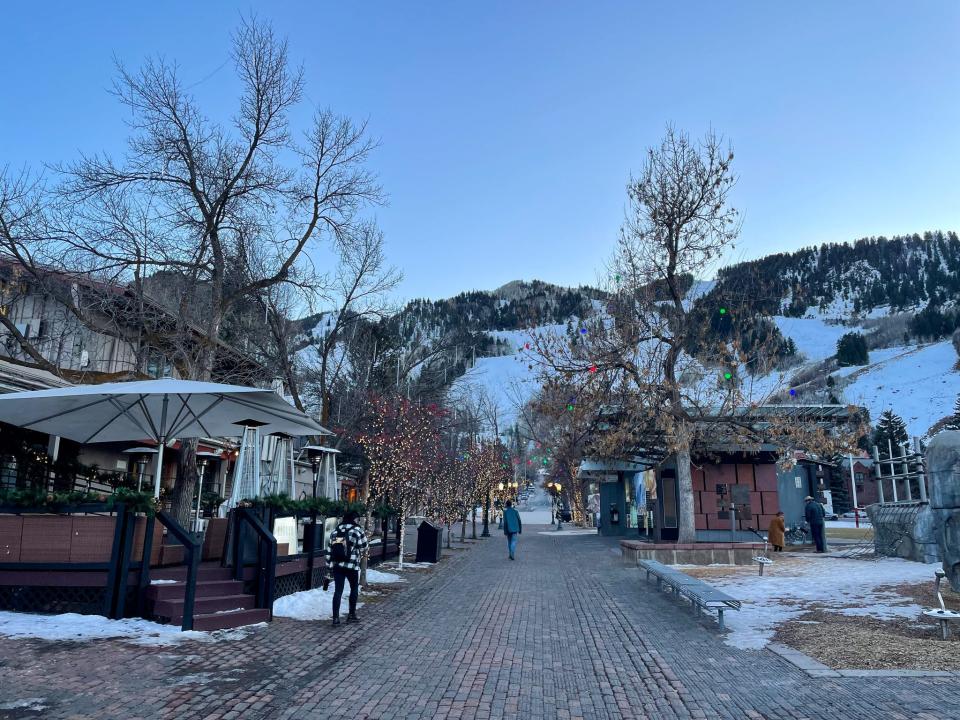
I spent my first day in Aspen debating whether it was the snowy slopes or brick sidewalks that gave the town its charming appeal.
Then I realized it was the lack of skyscrapers — or really any tall building for that matter. I noticed that the vast majority of buildings in Aspen were just two or three stories high, and as a result, I always had unobstructed views of the sky and mountains.
I left the ski town with a new sense of how the rich and famous vacation and live. But even after stepping into a luxe dispensary and touring a $45 million mansion, I left confident that the everyday traveler can visit Aspen, too.
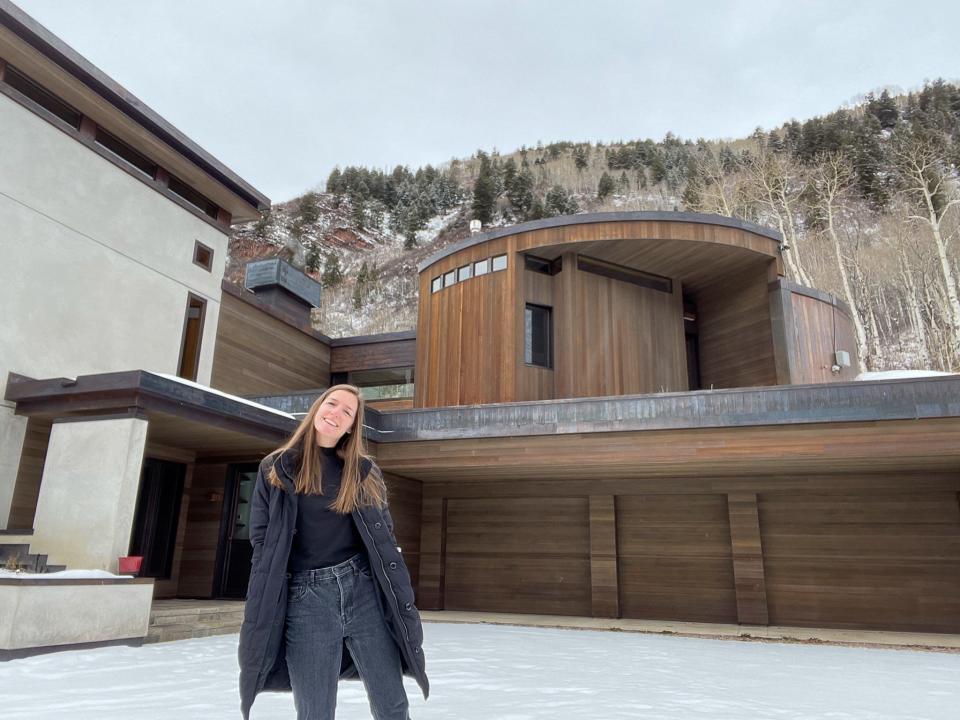
From food to real estate, my trip to Aspen was filled with luxury surprises around every corner.
I left the ritzy ski town aware that it isn't a cheap place to vacation but that it's also surprisingly not unattainable for the everyday traveler like me.
Between affordable beer-and-shot combos, meal planning, and cheap pizza slices, I'd happily plan a trip back — although I likely won't be able to afford a hotel that offers canine delights on its room-service menu.
Read the original article on Business Insider


